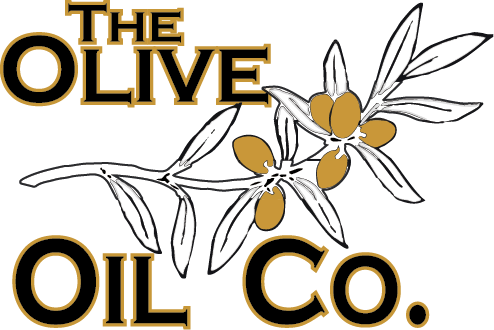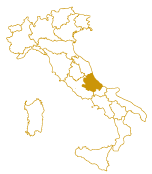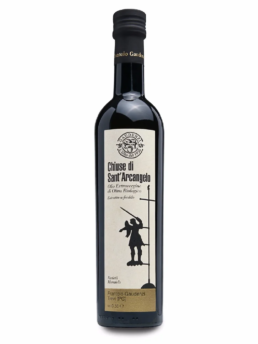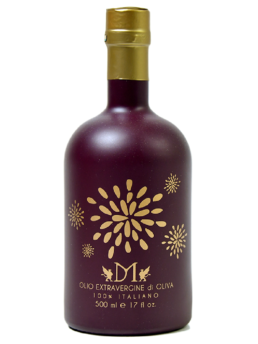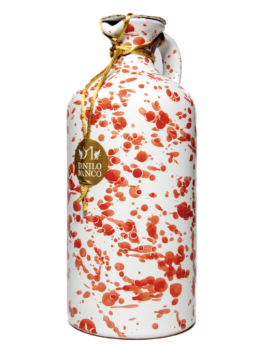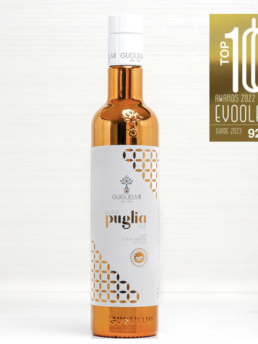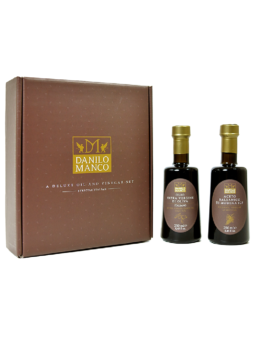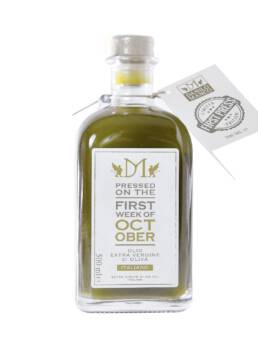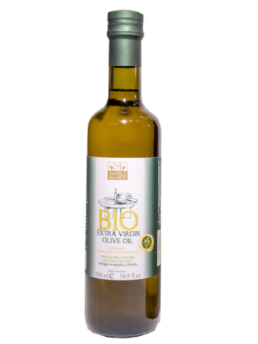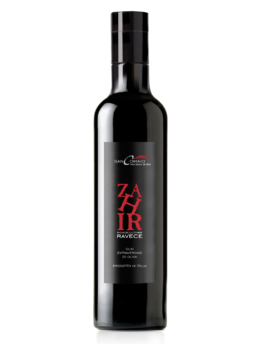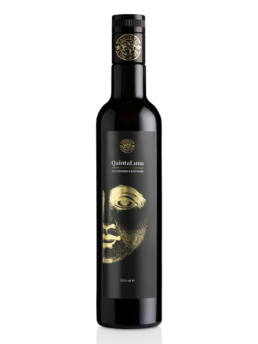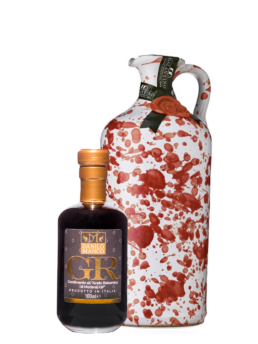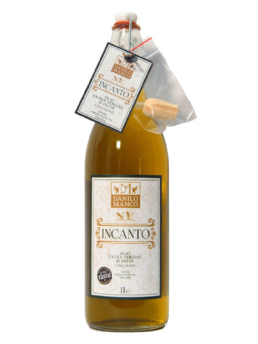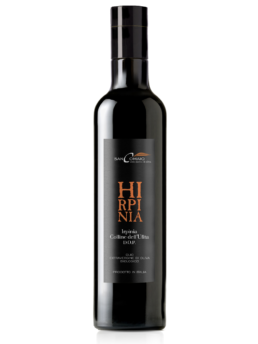
DESCRIPTION: Extra virgin olive oil obtained from the Intosso variety of olives, an oil with a bitter taste, that gives a powerful and structured character.
COLOUR: Dark green
ACIDITY: 0,2%
CULTIVAR: 100% Intosso
INTENSITY: Intense
TASTE: Bitter and spicy
SCENT: Strong bouquet with a hints of artichoke
PRESSING: Cold extraction, hand-picked very first days of October in a continuous cycle mill within 8 hours of harvesting
FILTERED
HARVEST: 2023/2024
Quantity: 500 ml
Honour & Awards:
2021-2022: 5 gocce Bibenda 2022 Fondazione Italiana Sommelier
2020-2021: 5 gocce Bibenda 2021 Fondazione Italiana Sommelier
Are you a trade customer? If you are a trade customer, please email us at trade@theoliveoilco.it
It goes well with structured dishes of fish, vegetables, and legumes.
Monkfish breaded with walnuts (for 4 people)

Monkfish fillets – 4
Walnuts 60 gr
Aromatic bunch 1
Clove of garlic 1
White wine 1 glass
Egg 1
Breadcrumbs 2 tablespoons
Extra virgin olive oil (EVOO) q.s.
Salt to taste
Spicy red chilly to taste.
Roll the fillets on a sheet, on which you will have spread the breadcrumbs, mixed with minced garlic, finely chopped herbs, salt, and pulverized chili.
Roll them in a spiral and secure them with a skewer.
Brown the skewers in a pan in hot oil.
Turn the skewers over and sprinkle them with the wine; cover and cook over low heat for 20 minutes.
After this time, brush them with beaten egg with salt Sprinkle them with chopped kernels and brown them in the oven at 180 ° C for 10 minutes.
Shipping and Handling
Delivery charges are: £5 for orders of up to £25, £3.95 for orders up to £35, £2.95 for orders up to £45. Delivery is FREE for orders over £45 before transport and any Vat where applicable (for UK customers only excluding Islands, please contact us if you don’t live in this area). We do not Ship outside the UK.
UK Remote areas and offshores where extra fees apply
ROAD SERVICE OPTIONS
|
Scottish Highlands and Offshore Options
|
Delivery Schedule
We deliver Tuesday to Friday. Orders placed by 9am will be dispatched the same day and will be delivered by our approved courier to arrive within 48 hours. Please be aware that all packages MUST be signed for, checked first and cannot simply be left in a garage or porch.
Orders placed after 9am will be dispatched the following day.
Back Orders
Because we use small suppliers and sell a lot of seasonal products, all goods featured on our website are subject to availability. We endeavour to keep the website updated but if a product you order should be unavailable you will be notified of this by phone or email and given the chance to choose an alternative item, cancel your order completely, or put it on back order to wait until it is in stock (we will ship your other items to you if you wish).
If we are unable to contact you we will go ahead and dispatch the rest of your order without the said item.

Aggiungi una recensione Annulla risposta
In a cool, dry place. Protected from light, heat sources and unpleasant odours. Once opened, minimize exposure to air.
Best consumed within 18 months from the date of bottling.
Why does olive oil get cloudy and thick?
Probably at some point you’ve seen some white lumps in the olive oil you store at home, but you know why?
If you’re a long time olive oil user then it’s possible that at some point you’ve noticed white crystals in the olive oil you keep at home. But do you know what they are and why they are there?
To explain, let’s start by comparing the freezing process of olive oil and water:
Water is a homogeneous liquid made entirely of H2O (hydrogen and oxygen) molecules. Since it’s made of one type of molecule, all of its particles freeze at the same temperature: 0ºC (32º fahrenheit). As the temperature lowers, the movement of the water molecules becomes slower until the water reaches freezing temperature at 0ºC, at this point the molecules stop moving and the water freezes and becomes solid: ice.
A similar process takes places with olive oil, but olive oil is not a homogeneous liquid like water is. The difference is that olive oil is made of a few different molecules, called triglycerides, and each has its own freezing temperature. The freezing point of these different molecules ranges between 0ºC and 15ºC depending on the fatty acid composition. The colder the olive oil gets, the greater the number of molecules that will start solidifying. Cold temperatures is the reason some white crystals may appear in your bottle of olive oil, especially during winter months.
Does that mean the olive oil is not good to use?
Not at all! The olive is perfectly fine without causing any nutrient loss. The freezing process is perfectly natural and has no impact on the quality of the olive oil.
In colder homes and countries in the Europe, olive oil can freeze under normal conditions, especially during the winter. In these cases, don’t worry and just remember that it’s actually better to store olive oil at a cold temperature. Cold temperatures prevent degradation of the olive oil., be sure to store your olive oil in the coldest place in your kitchen or pantry, to keep it as fresh as the first day you got it.
